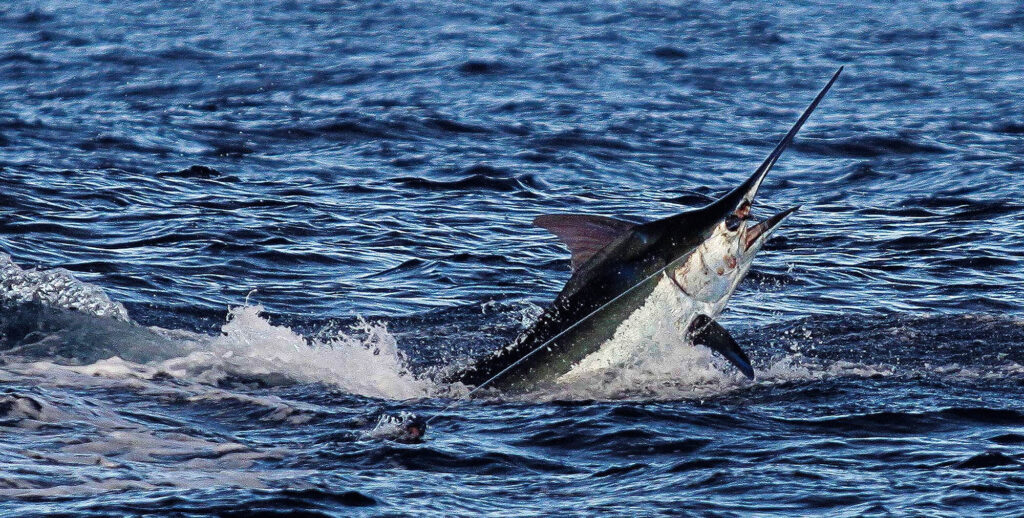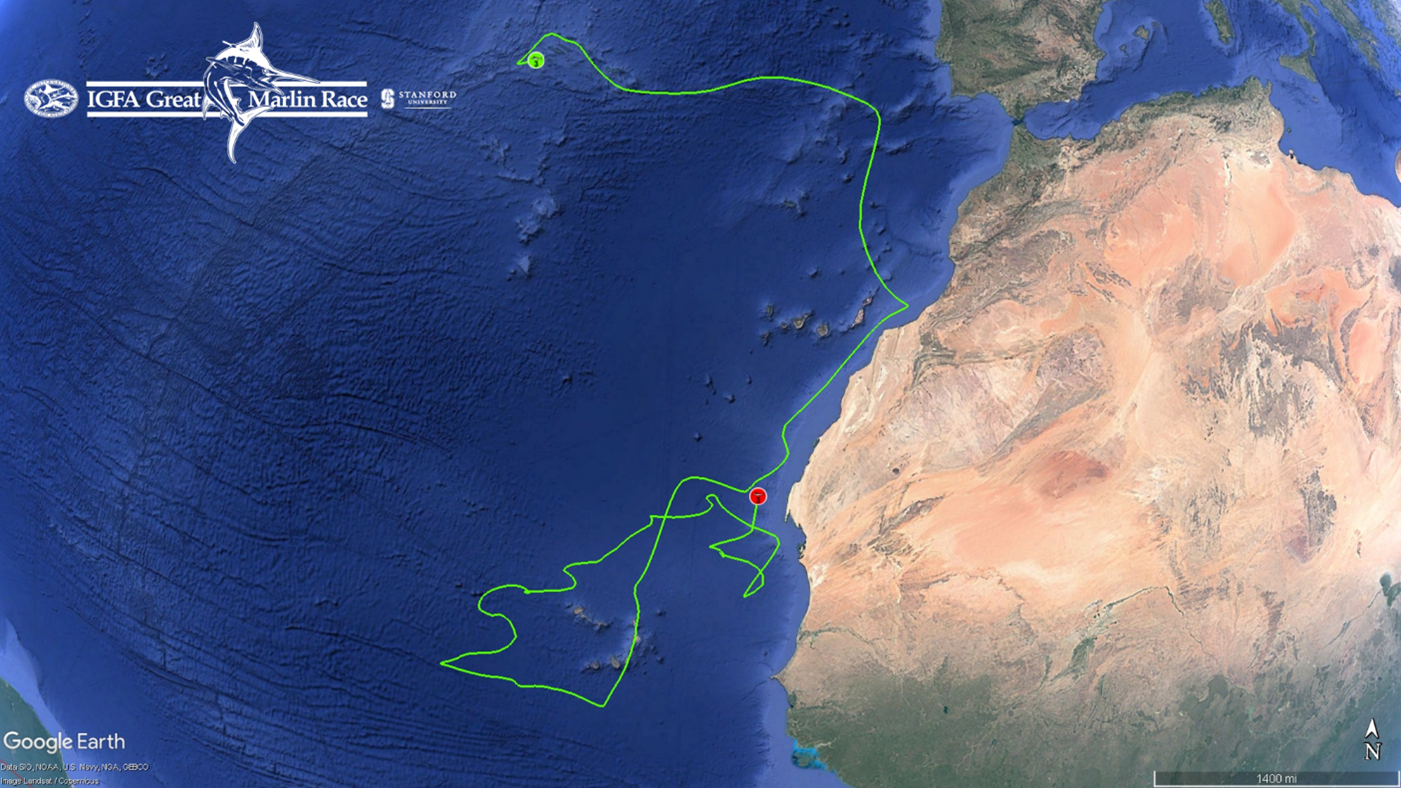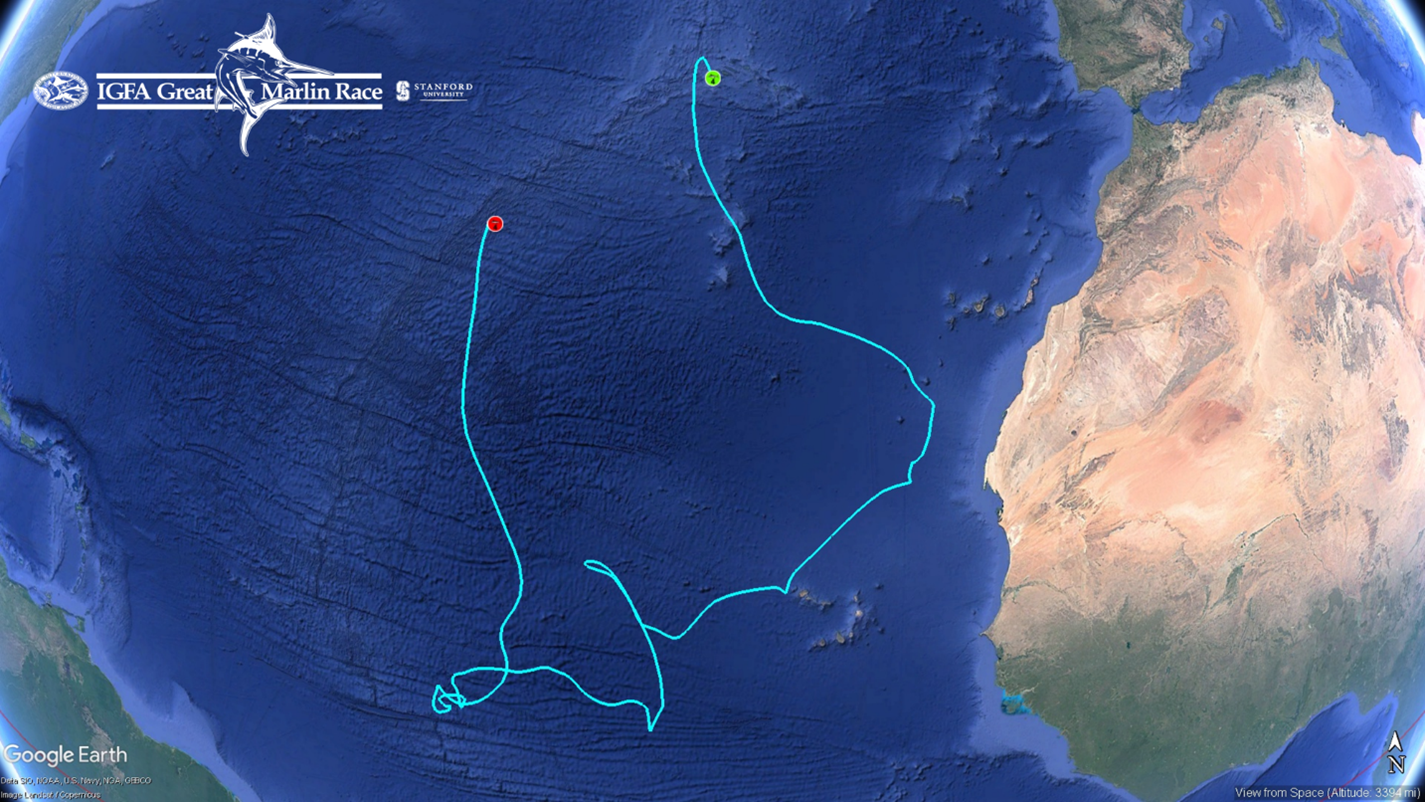The IGFA Great Marlin Race Continues to See Success

The IGFA Great Marlin Race, presented by Costa Sunglasses, is a research collaboration between IGFA and Stanford University and is sponsored by AFTCO, Bass Pro Shops and Cabela’s Outdoor Fund, PENN, and Yamaha Rightwaters. Recreational anglers, armed with cutting-edge satellite tag technology, become citizen scientists and deploy tags on the billfish they catch. These tags transmit data to researchers who learn more about billfish biology and how the fish interact with their habitat.
New ground has now been broken as tags have been deployed on blue marlin in the Azores as well as in the Pacific.
"Sea Weez" Tags Big Blues in the Azores
Kicking off in January 2023, the "Sea Weez" event in the IGFA Great Marlin Race successfully deployed five tags on four blue marlin in the Atlantic and one black marlin in the Pacific. Notably, three of the blue marlin were tagged and released off the Azores, representing a new tagging location for the IGMR. Two of the three Azores tags resulted in full 240-day deployment durations. These fish ranged from 650-700 lbs. (294-317 kg).
The first of the 240-day tags popped up 1,133 nautical miles from the tagging location after moving southeast towards the northwest coast of Africa, circling around Cape Verde, and returning to the coast for a total estimated track length of 5,070 nautical miles. This fish was caught by Nick Cortezi Sr. and tagged by Nick Cortezi Jr. with the help of mate Hannah Drake. This fish spent approximately 70% of the time within 10 meters (33 feet) of the surface where the water temperature ranged from 18-28°C (64-82°F). The time at depth was greatest between 25 and 100 m (82-328 feet) where the water temperature ranged between 15 and 28°C (59-82°F) and the deepest dive occurred in late February 2024 to a depth of 322 m (1,056 ft) where the water temperature was 14°C (57°F). The coldest water experienced during the deployment was 13°C (55°F) in late December 2023 at a depth of 145 meters (476 feet).

The second tag that reached the full programed deployment length of 240 days popped up 644 nautical miles from the tagging location. This fish also traveled southeast toward the northwest coast of Africa and passed north of Cape Verde. It then continued farther west before turning north for two months where the tag popped off for a total estimated track length of 7,778 nautical miles. This blue was caught by Brian McAllister and tagged by Jay Cortezi with the help of mate Joe Byrum. Over the tag’s deployment, this blue marlin spent approximately 60% of the time within 10 m (33 feet) of the surface where the water temperature ranged from 22-28°C (72-82°F) and time at depth was greatest between 25 and 100 metes (82-238 feet), where the water temperature ranged between 18 and 72°C (64-81°F). The deepest dive of the deployment was 250 meters (820 feet) in October 2023 where the water temperature was 17°C (63°F) and the coldest water temperature experienced during the deployment was 14°C (57°F) at a depth of 210 meters (689 feet) in November 2023.

The efforts of the "Sea Weez" Captain, anglers, and taggers have provided significant contributions to our knowledge of how these fish move and use their habitat in the East Atlantic. The IGFA would like to extend our sincere gratitude to Nick Cortezi Jr., owner of the "Sea Weez", and its Captain, Ross Finlayson, both of whom have been major supporters of the IGFA Great Marlin Race over the past few years.
We also look forward to the 2025 "Sea Weez" event where six tags have been sponsored by Nick Cortezi Jr. and will be deployed in the South Pacific including French Polynesia where blue marlin data is needed to better understand how connected these fish are between Hawaii and the South Pacific islands.
Three White Marlin, Three Different Patterns
In 2024, eight tags were deployed with five already popped up and three due to pop up between November 2024 and February 2025. As we await the results from the remaining three tags we wanted to highlight a very interesting result from three fish all tagged on the same day in the same location off the Dominican Republic. These three white marlin were all caught by Matias Raponi and tagged by his father Michael Raponi aboard the "Delta Dawn" captained by Pete Manuel. You may remember Matias Raponi as the high school student who raised money for satellite tag sponsorship through his school. You can read more about the great work Matias does here.
These three white marlin ranged between 65 and 75 lbs. and were tagged on March 9, 2024. All three tags popped up between September 5 and 6 after a full 180-day deployment duration. One of the great things about getting back tagging data is how unexpected the results can be. As scientists, we try to decipher patterns in how billfish move with the seasons, environmental conditions, and oceanographic conditions, then something like the results below make us scratch our heads.
All three of these white marlin exhibited completely different movement patterns. The first fish tagged (yellow track) stayed relatively local as it moved south before heading east then turning around and heading west off the coast of Venezuela and Colombia. This tag popped up just 358 nautical miles from where it was deployed after traveling a total estimated distance of 3,990 nautical miles. The second fish (white track) headed north before undertaking a quick trip back and forth between Bermuda and the Bahamas then continuing north past Bermuda until it reached the north Atlantic about 600 nautical miles due east of St. Johns Newfoundland where the tag popped up. This tag popped up an impressive 2,251 nm from where it was deployed after traveling a total estimated distance of 6,693 nautical miles. The third fish to be tagged (green track) headed east then south, looping around the Windward Islands to west then traveling north on the eastern side of the islands. This fish moves in and around the eastern side of the Windward islands before turning east then southeast when it popped up off the northern coast of Brazil. This tag popped up 1,762 nautical miles from where it was deployed after traveling a total estimated distance of 4,757 nautical miles.
The data provided by these three tags is thought provoking, showing the difficulty in predicting the patterns of billfish movement and why it is critical to collect as much data as possible to learn more about the drivers of behavioral patterns.
The IGFA would like to sincerely thank all those who sponsor tags for their continued contribution to collecting the necessary information to better understand, conserve, and manage billfish species. Without the benevolence of the recreational angling community, the IGFA Great Marlin Race would not be possible.
